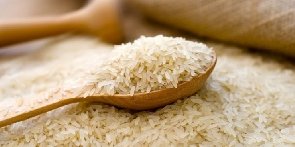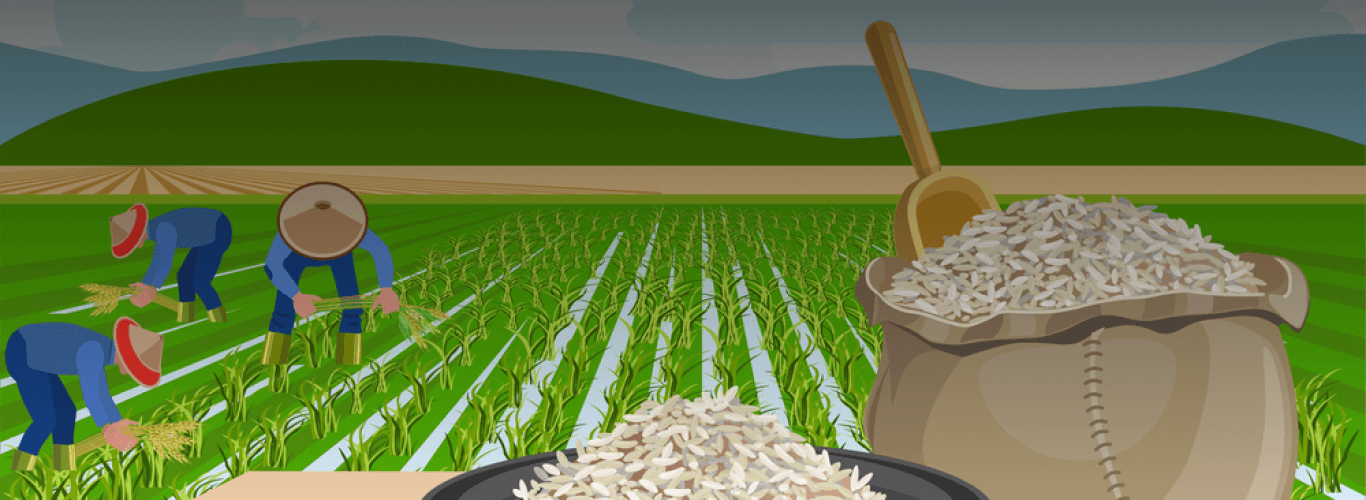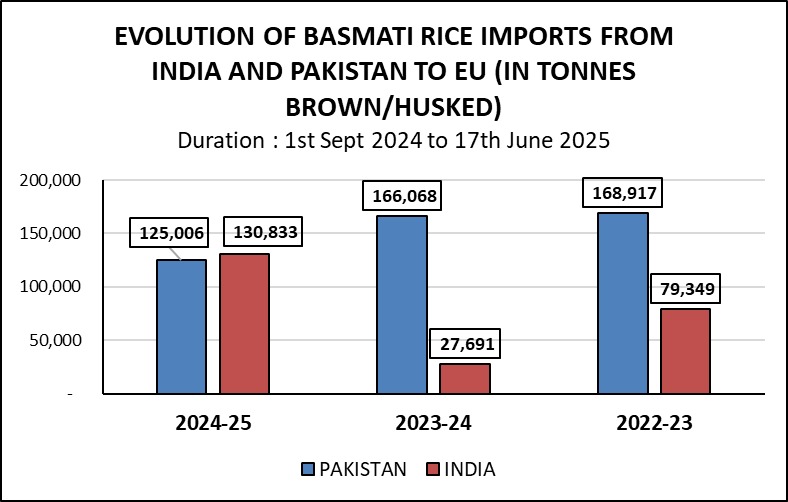Weekly Rice Market
(Indicative Quotes)
Basmati Rice
Basmati Rice | Indicative Quotes | Updated Weekly
Global Market | White Rice
White Rice | Indicative Quotes | Updated Weekly
| Origin | Type of Rice | Variety Name | Broken | Price | Change | High | Low |
|---|---|---|---|---|---|---|---|
| India | Milled White Rice | Long Grain | 5% | $376 | 0 | $380 | $376 |
| India | Milled White Rice | Long Grain | 5% | $381 | 0 | $496 | $379 |
| Pakistan | Milled White Rice | Long Grain | 5% | $346 | -11 | $360 | $346 |
| Pakistan | Milled White Rice | Long Grain | 5% | $380 | -11 | $640 | $380 |
| Pakistan | Milled White Rice | Long Grain | 5% | $590 | -11 | $613 | $488 |
| Thailand | Milled White Rice | Long Grain | 5% | $355 | -7 | $379 | $355 |
| Thailand | Milled White Rice | Long Grain | 5% | $387 | -7 | $669 | $387 |
| Thailand | Milled White Rice | Long Grain | 5% | $596 | -7 | $659 | $469 |
| U.S | Milled White Rice | Long Grain | 4% | $606 | 0 | $622 | $600 |
| U.S | Milled White Rice | Long Grain | 4% | $654 | 0 | $818 | $654 |
| U.S | Milled White Rice | Long Grain | 4% | $798 | 0 | $798 | $708 |
| Vietnam | Milled White Rice | Long Grain | 5% | $379 | 0 | $403 | $378 |
| Vietnam | Milled White Rice | Long Grain | 5% | $386 | 0 | $657 | $382 |
| Vietnam | Milled White Rice | Long Grain | 5% | $579 | 0 | $667 | $445 |
News

Rice Department to...
The Rice Department will meet with key agencies and rice mills to draft measures preventing paddy prices from falling during the 2025/26 harvest season. The Rice Department will

REAP protests excl...
Rizwan Bhatti KARACHI: The Rice Exporters Association of Pakistan (REAP) has voiced strong concern over its exclusion from the recently constituted National Agritrade Food

Punjab agri dept s...
The Newspaper’s Staff Reporter LAHORE: The Punjab Agriculture Department has signed four memoranda of understanding (MoUs) with Chinese technology and agricultural machinery

Rice farmers appea...
The Osudotu Agriculture Co-operative Society, a group made up primarily of rice farmers in Asutuare, has appealed to the government for urgent intervention to help boost rice

Average price of r...
The average price of rice sold at some 1,000 supermarkets across Japan in the week through Sunday dropped ¥63 from the previous week to ¥4,142 per 5 kilograms, the agriculture

Penang set to pion...
FMT Reporters An executive councillor says Mardi is awaiting help from Fujian to plant ratoon rice for the new padi season next month. PETALING JAYA: Penang is ready to be a

The Paddy Price Tr...
While Pakistan earns $3.2 billion from rice exports, the farmers who grow it receive barely half the price they did a few seasons ago, leading to widespread anger. Iftikhar Talpur

Microbial link bet...
New research reveals that rice paddy microbes, and not soil arsenic levels alone, dictate arsenic toxicity and crop losses; managing microbial balance may thus be key to

Thai rice prices e...
Thai prices hit lowest since October 2007, as demand from Asian, African buyers remains weak WRITER: Reuters Thailand’s rice export prices fell for the fifth straight week
Featured Registered Companies
RNT Tube
Rice Farmers in Crisis Huge Losses as Costs Soar & Prices Crash Buyers Exploit Market
October 6, 2025
Statistics
Sustainable Rice
Farmers Place
Forex Rates
Open Market Forex Rates
Updated at:
From | ||
|---|---|---|
To | ||
| Countries | Currency | Spot Rate |

Enjoyed the read?
Join our monthly newsletter for helpful tips on how to run your business smoothly








































